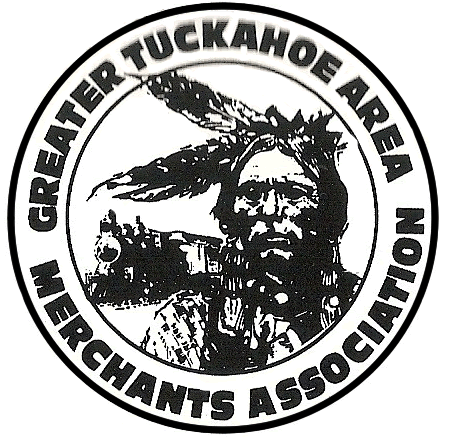
Tuckahoe and the surrounding areas of Head of the River, North
Tuckahoe, now Corbin City, had long been a favored fishing region of the Lenape Indians. The name of
Tuckahoe is of Indian origin. It was a vegetative, bread – like substance that was found at the base of trees and used as food. It was and still is an area that teams with wildlife, including nine pairs of bald eagles that fish the area between
Tuckahoe and Cape May.
The settlement of Tuckahoe began along both sides of the river in the late 1600’s. A Friends’ meeting was established in
Tuckahoe in the early 1700’s and a Baptist Church was built in 1751. By 1792 it numbered 60 families in attendance.
The river bustled with activity in the early19th century with three major industries flourishing; shipbuilding and the sea trade; bog iron production and glass making. Between 1828 and 1823 many two and three masted schooners were built and launched in the
Tuckahoe River. The timber was cut from surrounding woodlands and nearby Aetna furnace at Head of the River supplied the iron. Aetna Furnace also supplied most of the nails used in
Tuckahoe and the surrounding areas. The Aetna furnace ceased operating in 1832.
Glassmaking was a thriving industry in the Southern New Jersey area, with John Estell Glassworks to the north of
Tuckahoe. We also had a thriving glassworks on the banks of the Tuckahoe owned and operated by Randolf Marshall in 1814. The historic town of Marshallville has a large collection of early 19th century homes and the original brick and clapboard homes still dot the river’s edge.
The village of Tuckahoe thrived on both sides of the river for more than a century until Corbin City was incorporated in 1922.
As you stroll around downtown Tuckahoe you will see spectacular middle 19th century buildings, each and every one having a story to tell. Dr. Randolph Marshall’ s Pharmacy, was built in 1877 by John Steelman, a family of builders who are responsible for many structures in the Atlantic/Cape May area.
Although steam trains had long been in operation in other parts of the country, the railroad did not come to
Tuckahoe until 1893. However, 15 years earlier in 1877, steam power brought an improvement in transportation by water to residents of
Tuckahoe. A steam ” side wheeler ” was bought by a group of local citizens to operate between
Tuckahoe and Somers Point. Not only did this provide faster and more efficient transportation from the river to the Great Egg Harbor Bay, it also provided access to Philadelphia and other East Coast cities, besides the stagecoach.
The coming of the railroad was an economic boon to the village of Tuckahoe. With the passing of the glassworks in Marshallville, the Aetna Furnace closed and the heyday of wooden sailing vessels gone,
Tuckahoe was to become a railroad town, becoming the engine repair station for the line and thus the Pennsylvania Seashore Line was born traveling from Philadelphia to Atlantic City, Ocean City and as far south as Cape May. In 1894, famous excursion trains were launched and each day dozen of trains could be seen puffing and chugging through
Tuckahoe packed with tourists heading to the seashore for a day of fun. Many tourists from those early days, who are still living remember when a trip from Camden to Sea Isle only cost a dollar. The good old days.
